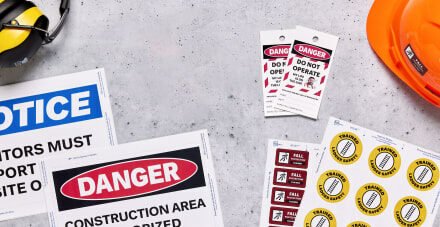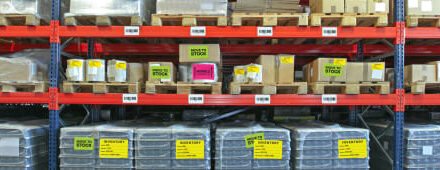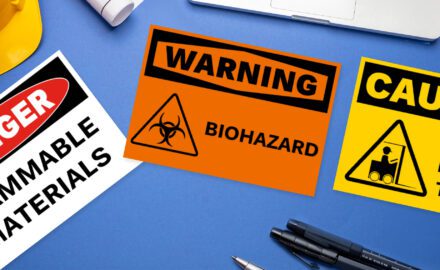
1) What are barcodes used for?
Barcodes are simply information that has been put into a visual form that machines can read. This allows for automatic identification and data capture (AIDC) which means collecting information from a person, thing, image or sound without having to enter the data by hand.
Although barcodes first rose to popularity as a way to make grocery checkout more efficient, in today’s digital age they are everywhere. Yes, barcodes are still used in all types of stores worldwide. However, they are also used for scanning patients’ medical wristbands, warehouse inventory management, asset tracking, movie tickets and so much more.
2) How are barcodes generated?
Barcodes can be generated in a few different ways. You can use a barcode font for manual creation, a point of sale (POS) retail system, a portable printer, software or use a free barcode generator.
3) Why does my barcode generator keep adding an extra digit to my UPC-A code?
UPC-A codes are 11 digits not including the check digit. So with the check digit, UPC-A barcode labels should have a combined 12 digits. But it can’t be just any number because the check digit is calculated from the 11 digits included in the UPC-A code.
How it works: A scanner checks the accuracy of the scan by using the 11 UPC-A digits it just scanned to calculate a number it can match against the check digit. If the answer doesn’t match the check digit, then there is something wrong with either the printed barcode, or the scan of the barcode.
When you’re using a barcode generator to create UPC-A barcode labels, a good one will do the necessary calculation and add the check digit for you if it’s missing. If you have 12-digit UPC-A codes that already include the check digit you’re all set and no further numbers will be added.
It should be noted that legitimate barcode generators will not work on UPC-A settings unless you input at least 11 digits, and you won’t be able to delete the twelfth check digit. If you want to make some other type of barcode (because you’re not using it to sell products) you should choose a different setting such as Code 128.
4) What do the barcode numbers mean?
Short answer? The numbers on a barcode are the exact translation of what the lines mean.
Machines can’t read numbers or letters so barcodes use machine-readable lines to encode human-readable numbers and letters. The thickness of the lines and how they’re spaced represent different numbers and/or letters depending on the type of barcode you’re making.
And there are many different types of barcodes. (Our barcode label guide contains a detailed look at the different types of barcodes.)
5) Are barcodes standardized?
For certain cases, yes. If you are creating your own barcode system, you can make your barcodes using any system or standard you choose. For instance, if you’re creating barcodes for managing inventory in your warehouse or tracking expensive company assets like laptops and other electronic devices.
However, there are barcodes used in retail, such as UPC codes and EAN codes that are very much standardized. There are also standards for where barcode labels should be placed when shipping packages, pallets and containers.
GS1 is a nonprofit organization with branches in the US, Canada, China, the UK, Germany, India, Malta and Australia that helps standardize the global language of business. This includes barcodes, barcode labels and barcode placement. GS1 barcode labeling standards are industry-standard and essential to the proper use of barcodes on products and packaging from your supply chain all the way to point of sale.
6) Are barcodes international?
UPC-A and EAN barcodes are indeed internationally recognized. They are all part of the same global database administered by GS1.
7) Are UPC-A and EAN barcodes interchangeable?
While EAN and UPC-A barcodes are internationally recognized, that’s not the same as being interchangeable. Firstly, UPC-A and EAN barcodes have completely different amounts of numbers. UPC-A codes have 11 digits plus a twelfth check digit. EAN codes have either 8 or 13 digits including a check digit.
Secondly, UPC-A barcodes are used for retail goods in the U.S. and EAN barcodes are used for retail goods in Europe. If your company is owned, operated and sells retail goods in the U.S., then you will need a UPC-A code, however you may also export goods to other countries (including Europe) with a UPC-A number because it is internationally recognized. And vice versa for EAN numbers.
8) Who assigns barcodes?
Similar to barcode standardization, barcode assignment depends on the type of barcodes and how you are using them. When using barcodes for in-house and/or marketing uses (sharing information, creating asset tags, warehouse management, etc.) you will assign your own barcode data using a spreadsheet or some other database you’ve created.
UPC and EAN barcodes are different because they are totally unique identification numbers so that your product is not confused with other products. These types of barcodes are assigned through GS1 to ensure completely unique codes.
9) Where to buy barcodes?
If you’re generating your own barcodes for internal or marketing purposes, you’re all set. There is no need to buy barcodes. If you’re selling products, UPC and EAN barcodes need to be purchased through membership in GS1.
Managing billions of UPC and EAN barcodes worldwide to ensure there are no duplicates is not an easy feat, so businesses pay to join the GS1 branch for their country/region. In return, GS1 assigns each company its own company ID number which will be the first part of all their UPC codes.
For each additional product and/or variation (size, color, etc.) the company assigns more numbers to their GS1 company ID number. The more unique products a company sells, the higher GS1 memberships may be. GS1 even provides a handy 10-step process for to help you get started with UPC codes for your products.
Buying Barcodes from a Barcode Reseller
Some internet companies resell bulk UPC/EAN codes for much cheaper than a GS1 membership. They do this by using their own GS1 membership to obtain a company ID, adding numbers on the end and then selling those codes to small companies selling through small independent retailers.
The benefit of this is extremely cheap barcodes, which can be helpful for small businesses on very tight budgets that are selling just a few products locally. The downside is that your products’ UPC codes will begin with the reseller’s ID number.
Buying barcodes through a reseller becomes a real problem if you wish to sell on a larger scale. Since barcode resellers are selling codes with their company ID to a number of smaller businesses, you are sharing a company ID with many different companies. Unfortunately, major retailers require companies to have their own unique ID numbers.
10) Can barcodes be printed on a regular printer?
Of course, there are specific barcode printers out there that generate and print barcode labels, but they tend to be on the expensive side. There are also direct thermal printers that can print huge quantities of barcodes (for example concert wristbands).
11) Can barcodes be any color?
Technically, barcodes can be any color, but if you want them to actually work there are few things to consider. First, and most importantly, contrast is key, which is why black and white barcodes are the industry standard.
If there is no contrast the barcode scanner will not be able to read your barcode.
Secondly, barcodes should never be reversed (light bars on a dark background) even in black and white. Lastly, because laser barcode scanners use a red light source, red and yellow should never be used for the bars in a barcode.
Taking into account the rules above, here are some combinations that work if you would like to try color barcodes:
- Black, dark blue or dark green on red or yellow background
- Dark blue, dark green on white background
12) What is X-dim, and why does it matter for barcodes?
The X-dimension (X-dim), in the simplest terms, is the base unit of measurement in a barcode. Either the width of the narrowest bar (linear barcodes) or the size of the smallest cell (2D barcodes). The X-dim is measured in thousandths of an inch or “mils” so it is sometimes also called the “mil size.”
The X-dim of your barcode is important because: 1) the resolution of barcodes (which is crucial for accurate scans) is measured in dots per x-dim 2) X-dim size effects the scanning distance of your barcode. Increasing the X-dim is necessary for increasing the scan distance of your barcode.
13) Can you resize barcodes?
Yes and no. Using a quality barcode generator will allow you to select the size and make adjustments. You should not resize a barcode the same way you would an image in a photo editor by simply dragging the corners.
Resizing a barcode on your own (without using a barcode generator) can cause resolution problems, similar to how a photo gets blurry when you make it too large. This effects both artwork resolution and print resolution, and for optimal scanning barcodes need to be created with both high-resolution artwork and printing.
Shrinking barcodes: Much like simply dragging corners to resize, for successful scanning barcodes should never be cropped or truncated. Even when using a reputable barcode generator, shrinking barcodes can be tricky due to the X-dim, print material quality and printer type.
You should always choose the highest quality resolution, print material and print settings available so that your barcodes are clean and result in accurate scans. However, the smaller the barcode you want to print, the better the resolution, print material, print settings and the quality of your scanner must be, so keep that in mind.
It’s important to make sure your equipment (printer and scanner) are compatible with the x-dim you’re aiming for. One way to test this is to print a test page of barcodes with a variety of x-dims and then try to scan the barcodes.
14) When were barcodes invented?
Barcodes were invented in the late 1940s/early 1950s by Bernard Silver and Norman Joseph Woodland. The pair first filed a patent application for barcodes on October 20th, 1949, and were granted the patent October 7th, 1952. (US Patent 2,612,994)
By the late 1960s, barcodes were being used to identify railroad cars, but it wasn’t until the 1970s that barcodes used for automating supermarket checkouts became commercially widespread. The first 2D barcode was invented in 1987.
Additional Resources:
Time to Update: How to Get Started with Barcode Labels in Your Facility



